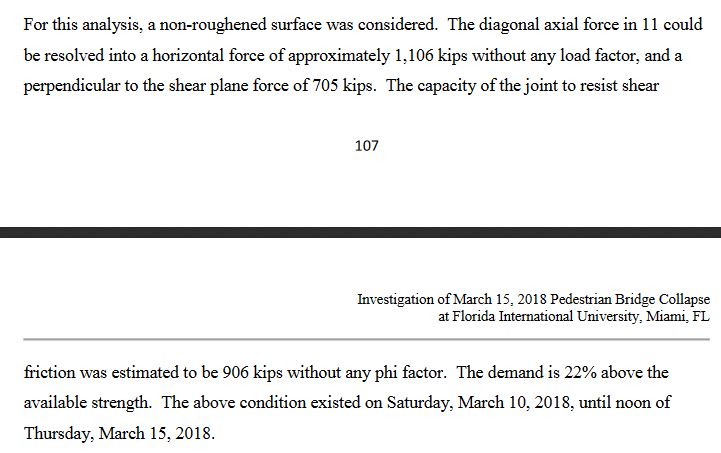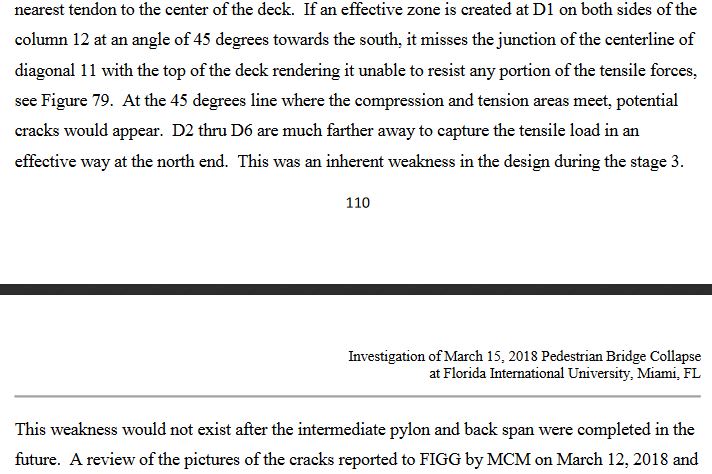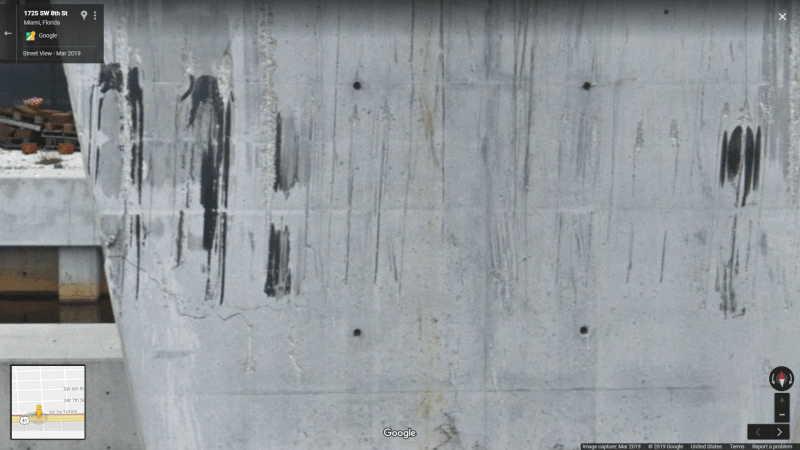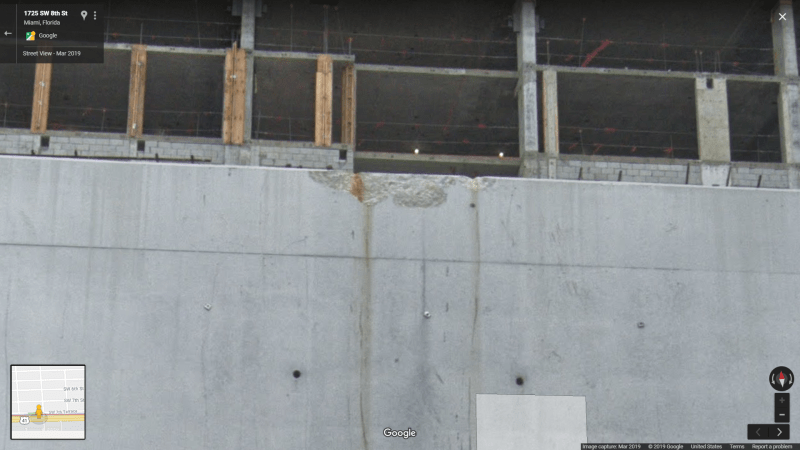I have been following this thread, highly intrigued by some of the comments by those that post and in seeing how the investigation unfolded. From the first reports I saw on the bridge collapse I could tell some of the critics of the bridge design and construction (YouTube, comments sections on news sites, etc.) would point to many non-important items, such as the principal owner of the design firm, FIGG, being a woman, construction was conducted by a minority-owned business, possibly there was some corruption in the design award process, etc., etc. I was hoping as a whole the engineering community could rise above some of this but hey we are human and humans are emotional - it is the way it is.
Well, enough said on that but what I am so amazed with is the OSHA report, in my opinion, has finally pulled the gloves off and said what needed to be said:
1. The design was lacking in structural strength.
2. The design did not provide redundant load paths.
3. The EOR had plenty of information and notification the bridge section erected was showing signs of structural failure.
4. The peer review system failed not only with the CEI (Bolton, Perez and Associates) but also with the "independent" review hired by FIGG - Louis Berger. Even, FDOT and FIU should have put more engineering horsepower into their review of the plans and ongoing construction.
5. The very experienced construction team, Munilla Construction Management, on site did not strongly speak up and call an alarm.
6. Many firms, entities, professional people (with very storied and prestigious degrees and licenses) failed to step up and be "Captain Obvious"; their years of experience and expertise were not put to use when it was most important.
So, how did all this go down? Did this relatively "simple" pedestrian bridge get a quick glance over for the calculations and analysis? Hey, it is "only" a pedestrian overcrossing. Did the hope and interests of FIU to promote their ABC engineering program cause their peer review to take a back seat to getting a landmark iconic bridge - even if the design is a risky concrete truss? Isn't there a term or theory for no one willing to challenge a perceived expert or group of experts? I see this not as a lesson for pointing a finger at a villian, but as a lesson for learning to not to get lulled into complacency.
Mr. Pate, is a licensed professional engineer and the FIGG team is composed of multiple PEs; they are very skilled and their record and past designs speak to that. They are very educated and experienced.
Ms. Figg, may not be a licensed engineer, but she has an engineering degree(s) and whether she is licensed as a professional engineer is not the point. She hires very capable people to do the actual engineering, probably without micro-managing them - give 'em the project and turn 'em loose. She continues to run the company her father started; more than likely with a great sense of pride and honor.
Bolton, Perez and Associates and Louis Berger were supposed to have used their engineering expertise to check the work of Mr. Pate and his team. Did they get lulled into giving the analysis a quick glance because of the reputation of FIGG and Denney Pate? The OSHA report calls out the Louis Berger review very pointedly as being insufficient and improper for ensuring load conditions for all phases of construction were reviewed.
FIU with their academic team should have looked more closely at the plans and the ongoing situation. But somehow they coasted and only asked light questions and did not show the engineering expertise that would be expected of a center of bridge engineering. Did they let the FIGG reputation blind them? Did FDOT engineering figure this is all covered by all the aforementioned experts and they wouldn't need to look too closely?
Even the construction company with the more often "boots on the ground" view didn't step back from the project and call for a halt until the cracks and failing structure were addressed. They totally flew by the numbers given by the EOR and since none of the other reviewers objected strongly maybe MCM chose to stay mum, also.
I'm taking this as a lesson for me - though I only design desktop type analyzers. For now on, when I present my calculations and designs for review, I will strenuously ask for thorough review and comment/criticism. This bridge failure has emphasized to me, as a designer/engineer there are times you can be so invested in your design you may miss the obvious and unintentionally precipitate a disaster!




